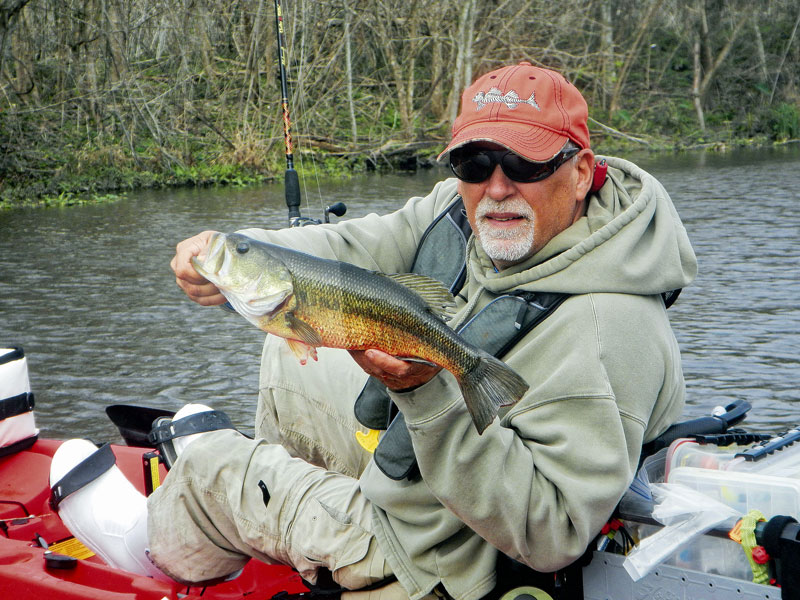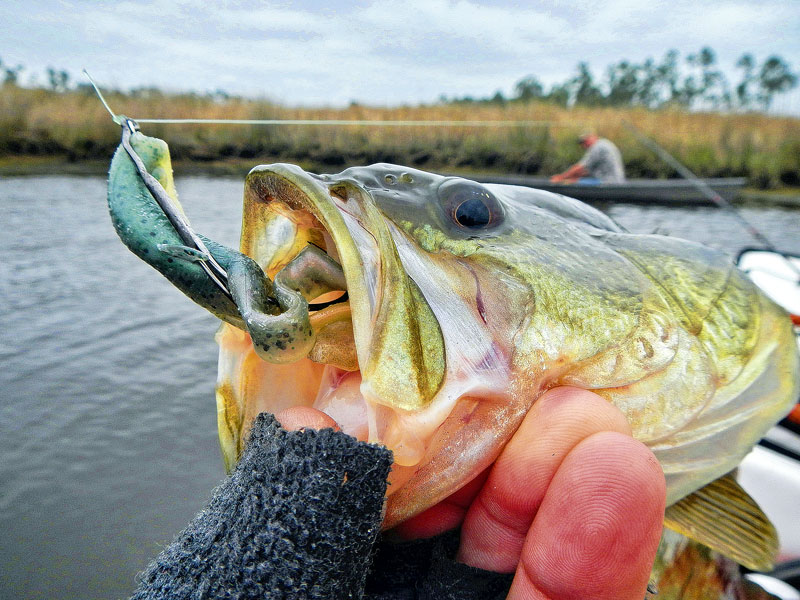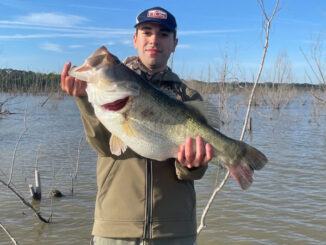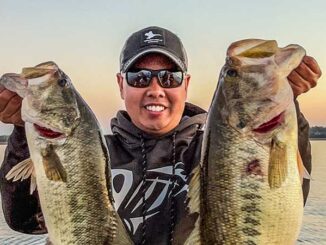
Largemouth bass are adding to the targets anglers have in the southeast Louisiana marsh.
Many years ago, you rarely heard the word “bass” spoken by fishermen in southeast Louisiana. The coastal marshes were salty, and trout and reds were king. However, if you fished inland, you could catch perch (bream), sac-a-lait (crappie) and of course, green trout (bass).
Nowadays, green trout have spread back to areas that were historically brackish but had all but disappeared across the coast due to saltwater intrusion. It’s almost impossible to fish speckled trout and especially redfish these days without encountering some green trout.
Yes, bass still inhabit the inland canals and lakes, but their populations are booming in much of the coastal water that has reverted to brackish for a variety of reasons. In efforts to combat coastal erosion, freshwater diversions have greatly lowered the salinity throughout their reach. Other mitigation and hurricane-protection projects have changed the hydrology in many areas and slowed the flow of saltwater inland and reduced inner coastal salinity. A prime example of this is the waters of St. Bernard and Plaquemine parishes.
Changes
In St. Bernard, the Mississippi River Gulf Outlet was closed to commercial traffic, dammed off below Bayou LaLoutre at Hopedale. While water still flows through the porous structure, the hydrology has changed, and green trout and other freshwater species are being caught in areas they hadn’t existed in the 40 or so years before. This was bolstered by the “Great Wall” storm-surge barrier and new floodgate built as part of the revamped levee system across the MRGO near Chalmette.
On the east bank of the Mississippi River in Plaquemine Parish near Buras, the river cut a natural diversion in what has been named Mardi Gras Pass in honor of the day on which it was discovered. The pass, left to the whims of mother nature, rapidly expanded and became a natural freshwater diversion that mimics the seasonal flooding that occurred before the levees were built to constrain the river.

What does this have to do with kayak anglers?
With all the freshwater came changes to the habitat and species. Many areas have become shallower due to silt build-up, and submerged aquatic grasses have exploded in many areas. The mixing of freshwater and saltwater species has broadened the opportunities for kayak anglers to catch more fish in areas that are difficult for many powerboat anglers to reach. Healthy stands of submerged aquatic vegetation do their part to filter out the river’s silt and keep the water fairly clear.
So what do kayak anglers need to do? Nothing, really. The same rod-and-reel outfits and lures you’ve been using for specks and reds can add green trout to your cooler. Moreso than specks, green trout are structure-oriented, like redfish. Pay attention to logs, sticks and pilings. They are particularly fond of old duck blinds.
Any day you think is a good day for trout and reds is also a good day for green trout. Green trout are influenced by tides, just as specks and reds. Days with good tidal movement generally see better bite activity. However, bass spawn quite differently than trout and reds. The bass spawn occurs in early spring and is distinctly different. While trout and reds travel to specific areas and gather for spawning rituals, bass utilize beds in nearby spawning areas where they spend most of their time. Built by the males, the beds are in shallow areas along the shoreline, where the females come to lay their eggs. During the prespawn, male bass cruise shallow areas to find bed sites. As the water warms, both males and females can be found in these areas. Cold fronts can move fish to nearby, deeper waters.
A fishing smorgasbord
The good news is that the addition of green trout to the area has not seemed to negatively affect the number of trout and reds. However, reds are more tolerant to freshwater than are trout. All three species can be caught using the same bait, lures and techniques. Don’t be surprised if one cast is a bass, the next a redfish and the third a speck. You just never know, and that just adds to the excitement.
State regulations for green trout allow for a daily creel limit of 10 fish, with no minimum or maximum size limits. The fish are great acrobatic fighters and make great table fare.
While some boat anglers lament the changes taking place in the coastal marshes, kayak anglers are more apt to recognize that the reduction of saltwater intrusion is good both for the coast and the sport. A healthy marsh builds land and offers better protection from future storms. The increase in kayak fishing opportunities is simply a welcome bonus.


